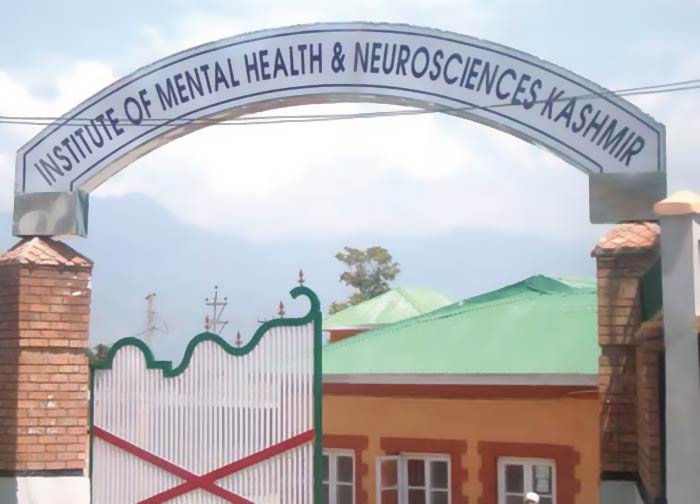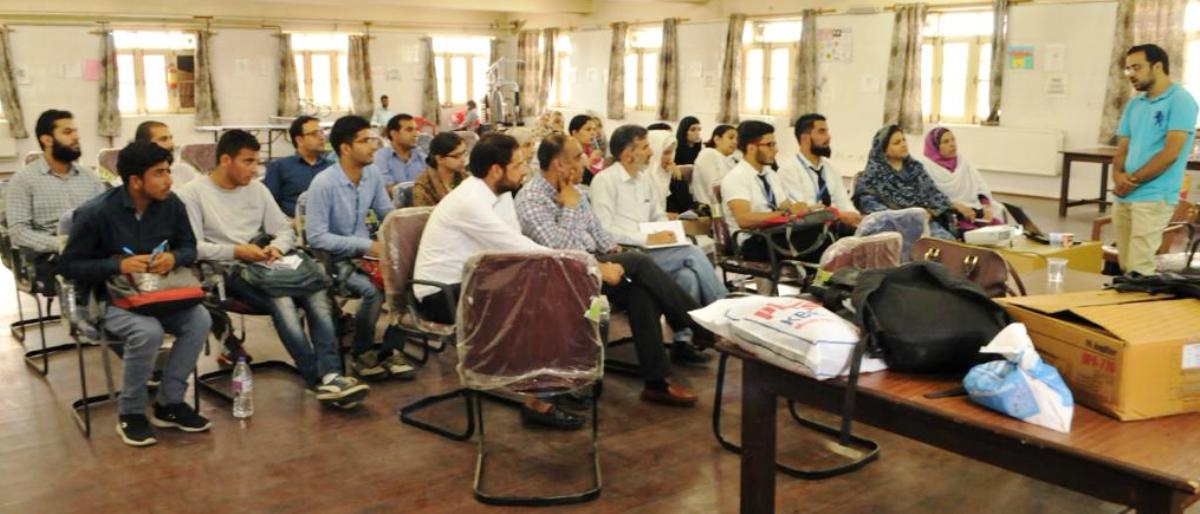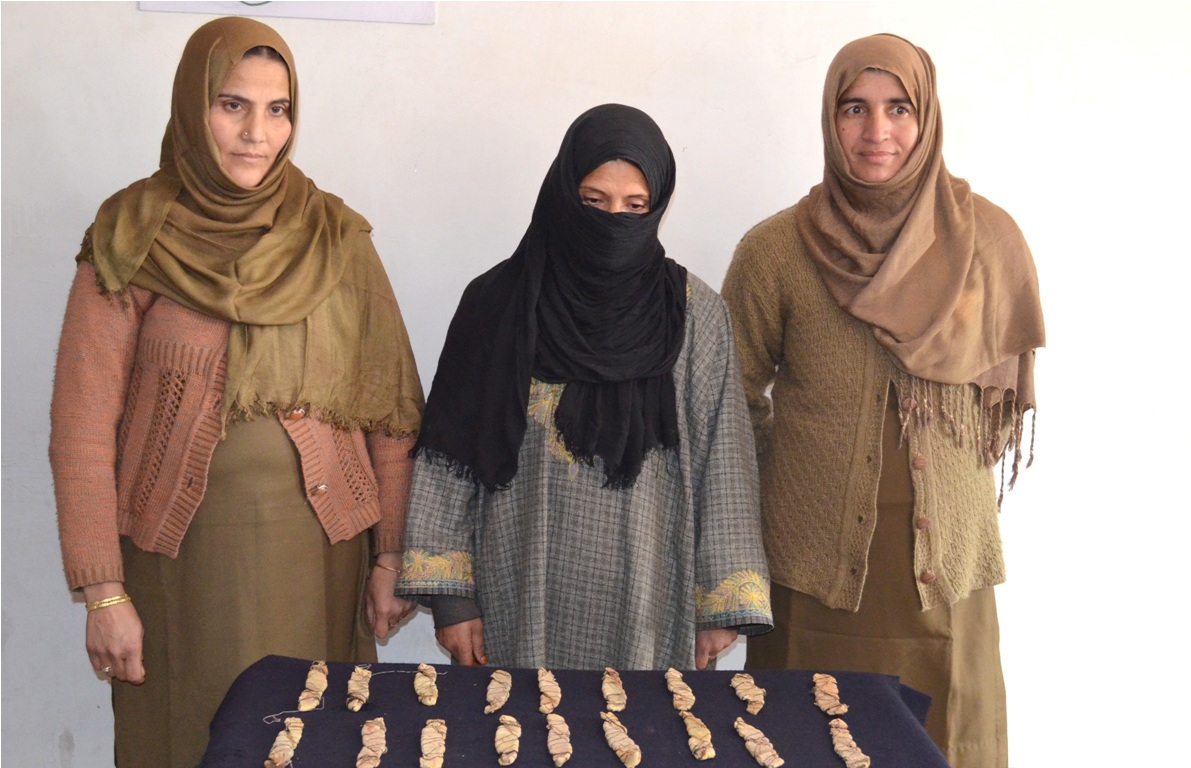by Saima Bhat
SRINAGAR: The prevalence of substance abuse in Kashmir has increased manifold. As per the latest data available at SMHS community centre, 710 patients were admitted with drug dependence in 2017-2018, in comparison to only 535 in 2016-2017.

The number of admitted patients from Srinagar was 185, followed by 43 in Budgam, 40 in Baramulla, 39 in Anantnag, 25 in Kupwara, 24 in Pulwama, 15 in Shopian, 14 in Bandipora, and 11 patients each in Kulgam and Ganderbal.
According to the GMC database, Srinagar and its associated hospitals, the number of patients with substance use visiting OPD in the year 2016-2017 was 6157 and between January 2017 and December 2017, it was 6550.
Amid rising incidence of substance abuse in the state, the government has finalised the first-ever drug policy. Framed by the Institute of Mental Health and Neuro-Sciences (IMHANS) of the Government Medical College (GMC) Srinagar in collaboration with the department of psychiatry, SKIMS, and the J&K State AIDS Control Society, the draft policy, a 31 page draft document, has materialised after years of demand by experts for a roadmap to deal with substance abuse cases in the state.
The policy has mentioned a study from IMHANS, in a Drug De-addiction centre in Srinagar suggesting that over two-third of patients in the study had started substance abuse in the age group of 11-20 years.

The most common substances of abuse identified included nicotine at 94.4 per cent, medicinal opioids at 65.7 per cent, cannabis at 63.6 per cent, benzodiazepines at 45.5 per cent, other prescription medications at 43.4 per cent, alcohol at 32.5 per cent, inhalants at 11.1 per cent, and cocaine 7.5 per cent. Poly-substance abuse was found in 91.9 per cent of the studied patients. Inhalant use was seen pre-dominantly among adolescents at 54.5 per cent whereas nicotine at 50.2 per cent, cannabis at 49.2 per cent, alcohol at 51.1 per cent, opioids at 58.4 per cent, and benzodiazepines at 53.48 per cent were more predominant in the age group of 21 to 30 years.
While quoting another IMHANS study, the report said that in 2016-17, on the phenomenology of inhalant use found that two-third of the study population were in the adolescent age group. About 99 per cent of the study population were males belonging to the middle socio-economic class.
The policy also talks about an alarming increase in the use of opioid-based preparations along with multiple substance use from the 1980’s to the year 2002 and they have mentioned the pattern of abuse has also changed in female patients. Among the various reasons for substance abuse, the significant number attributed it to the prevailing condition in the valley at eleven per cent.
The policy has come up with 16 action policy plans that include:
1. Up-gradation of de-addiction centres of GMC, Srinagar and Jammu in terms of infrastructure and manpower to enhance the care level and provide linkage to the community.
2. Establishment of drug de-addiction centres in SKIMS MCH and all upcoming medical colleges in the state.
3. Enhancement of de-addiction treatment services in all district hospitals having a psychiatrist, and providing manpower to the psychiatrist through District Mental Health Programme for running the de-addiction services efficiently.
4. Training of medical doctors, para-medical staff and other para-clinical staff in identification, intervention and referral of patients with substance use disorders.
5. Utilization of mass media in spreading awareness across schools by making and broadcasting movies and internet based informative videos.
6. Sensitization of community leaders including teachers, preachers, social activists about substance use.
7. Sensitization of para-social and para-health workers including village level workers, ASHAs, ANMs, para-legal field workers about substance use and their role in curbing it.
8. Implementation of NDPS Act in letter and spirit. Discussions and deliberations about its utility and any amendments needed in view of the changing trends of substance use, including solvents and synthetic drugs that are currently not covered in the NDPS Act.
9. Re-orientation of literacy-mission into an educational-mission, focusing on the overall development of children with special focus on out-door sports/playing and moral education, thus, contributing to society building.
10. Regulation of content on the internet and curbs on glamorizing the substances of abuse (smoking/alcohol/cannabis).
11. Extension of after-care in the form of rehabilitative care within the community, ensuring life of dignity and purposefulness by empowering them socially and economically.
12. With the changing modus operandi of creating availability of substances of abuse, the controlling agencies need to re-orient their modus operandi to counter balance the availability of substances.
13. The school health check-up camps, particularly in the case of adolescents, should include screening for substances of abuse.
14. Introduction of self-help communities on the lines of Narcotics Anonymous and Alcoholics Anonymous in the state of Jammu and Kashmir.
15. Medical insurance and medical leave benefits should cover the de-addiction treatment period just like any other medical condition.
16. Resources for data collection and research should be made available in the de-addiction centers as knowledge of the menace is key in its control and facilitates the development of evidence based treatment protocols.
As per the policy, 14 departments have been identified to play a role in the implementation of the policy and bring down substance abuse. Among these are IMHANS, GMC Jammu, directorates of health services of Kashmir and Jammu and other health institutes of the state, J&K police, department of education, excise and taxation department, department of social welfare and non-governmental organisations working in the area of de-addiction.

Treating drug abusers like other patients is the focus of the new policy. By treating drug addiction like any other ailment, the new drug de-addiction policy will encourage drug abusers to seek help without the fear of stigma associated with it.
This integration model, the policy reads, buds from experiences with diseases like tuberculosis and leprosy, which also have a stigma associated with them, because the healthcare system treated these in satellite facilities separated from main hospital settings.
This new model of treating cases of drug abuse makes de-addiction part of the total healthcare system across districts, a senior healthcare expert said.
The policy also focuses on prevention of substance abuse rather than dealing solely with de-addiction. It calls for stricter enforcement of the already existing laws and enactment of more stringent laws. It highlights the rampant misuse of prescription medications and the reckless sale of medication with psychoactive properties at medical shops and demands action on this front.
The policy also lays emphasis on creating awareness about the effects of substance abuse and the involvement of stakeholders at all levels in prevention strategies. The integrative system, experts argue, would also be more sustainable as existing human resource and laboratories in hospitals could be utilised.
In addition, this model, where the health care system is geared up with skills needed for the epidemic of drugs would also cater to the ever-increasing emergencies like an overdose, withdrawal complications and other medically co-morbid conditions associated with substance abuse.
The policy also aims at increasing access to out-patient services like motivational therapies, detoxification and mental health conditions associated with substance abuse and in-patient services for complicated withdrawals, multiple relapses and emergencies. The system will have adequate support of laboratories for diagnosis, referrals to other speciality clinics, and pharmacy, read the policy document. The policy will be finalised after feedback from stakeholders and would be then placed before the State Administrative Council for clearance.















